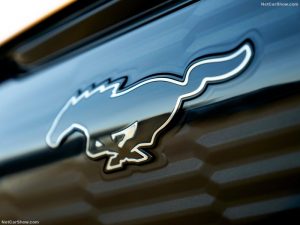Common Car Problems and Issues to Watch out for as Your Car Ages
It’s been said that the average car contains over 20,000 components and, if you’re lucky, most will last at least 100k miles. But eventually, all cars will start to break down. Driving with faulty parts is dangerous, so it’s important to know what to look out for when your car starts acting funny. Here are some of the common problems you need to be prepared for once your car reaches a certain age.
Brake Pads
Brake pads are a vital part of your car’s braking system. They are located on the top of your car’s wheels and help your car stop by converting kinetic energy into heat energy. When you press the brake pedal, a hydraulic pump will apply pressure on the brakes, and the brake fluid will push the brake pads against the car’s rotors.
While regular usage will not wear out your brake pads, neglecting them can shorten their lifespan. Neglecting to change them at regular intervals or ignoring grinding sounds will put you in danger of damaging your car and having to spend a lot more money on repairing it.
It is important to understand that just because you have worn out one set of brake pads does not mean that you have to throw them away. Instead, you can replace just the pads or the entire brake system as needed.
Trouble Starting the Car
A common problem that every driver will face one day is the car not starting. The vehicle will make the sign of turning on, but it won’t do so. This is especially true if there’s an issue with the fuel pump or electrical connection problem. However, you can do a few things to help this problem:
- Check if there is no fuel in your gas tank since it’s common that people don’t remember to fill up their tanks
- Remove any dirt or rusts trapped in the fuel tank, especially near the outlet filter.
Foggy soot from the exhaust
Foggy soot in the exhaust is one of the most common problems with modern diesel cars. As DPF can only emit small particles, it is often clogged or clogged with soot-containing exhaust fumes. Soot in the exhaust of “diesel” is a mixture of ash and carbon formed by incomplete combustion of carbon monoxide in the combustion chamber. It should be cleaned regularly to ensure the good operation of the diesel car.
In order to clean foggy soot, you need to find a professional to clean the diesel particle filter using DPF cleaning machines. The engine will produce more carbon as long as it does not burn completely. High-temperature DPF filters will automatically burn carbon particles and then release them into the air through the exhaust pipe.
Pre Existing defect
This is a pre-existing defect, which means that the defect existed prior to your purchase or repair of your vehicle. Therefore, there are no repair facilities that can claim responsibility for these defects, and they do not appear to be related to any vehicle maintenance or defective aftermarket parts.
This defect may have been caused by collision damage, improper alignment, last oil change, or improper tire rotation. The contaminants that are not removed during the oil change and or subsequent vehicle maintenance causes premature wear and failure to these parts. Suppose you plan on performing additional services on your vehicle. In that case, it is important to take it to a quality facility where they will inspect the vehicle first to identify any underlying problems. Any problems found should be corrected before any additional services are performed.
Comfort issues
Comfort issues may arise as a result of wear and tear on your tires. When a tire has too many treads, your car will have a hard time controlling the movement. Because of this, the suspension is more likely to get worn out and saggy, which will lead to an uneven ride. The best solution for this problem is to get new tires before they get worn out.
Oil leaks
Car leaks are annoying and are indicative of something going wrong with your car. You can usually fix a leak by replacing a seal or oil pan gasket, but some leaks require more extensive repair work.
Oil leaks can occur for some reasons:
The most common reason for an oil leak is a bad oil pan gasket. Over time, the seal that separates your engine from your oil pan will age and deteriorate, causing your car to spill precious lubrication.
Other areas that seem like oil leaks may not be oil leaks at all. For example, over time, rubber hoses and other parts can start cracking or wearing down, causing the release of fluids that may look like an oil leak in progress but are quite harmless.
Engine Problems
Your engine is the core of your car, and if it has a problem, then everything else will suffer. It would help if you watched out for some of the following signs:
- Dizziness – Your car’s engine does not follow a linear path while it is running. As it runs, its cylinders will have their exhaust and intake valves open and close at different times. Some valves will open when the engine’s piston moves upward, while others will open when the piston moves downward. When the exhaust valves are open, they allow exhaust gases to exit the engine and go out via the muffler.
- Unexplained power loss
- Difficulty starting the car
- A rattling sound when the car is running
- Car won’t shift gears properly
- Exhaust smells bad or smokes coming from the back of the car
The best way to deal with these problems is to get them checked out immediately. Contact a qualified mechanic and only use reputable garages.
Steering & Suspension:
The steering and suspension systems should help to keep your vehicle in safe control, but they can wear out over time. If they break down, this can be very dangerous.
A car’s steering system turns the wheels in response to the driver’s input. Modern cars have ‘rack and pinion steering systems, where a wheel mounted on a rack mounted to the steering column is connected via a pinion gear to the wheels.
Car suspension systems are designed to help absorb the bumps in the road surface and keep your car running smoothly. Spring, shock or torsion bars and rubber bumpers all help to keep your car level.
A worn or broken steering or suspension system may make your car pull one way or make noises when you drive. For example, if your car pulls to one side when you’re driving, it could result from a fault with the steering or suspension system.
Your car’s steering and suspension systems should be checked regularly by an experienced mechanic. You’ll know there’s a problem if your steering wheel vibrates, pulls to one side or makes a rattling noise.











